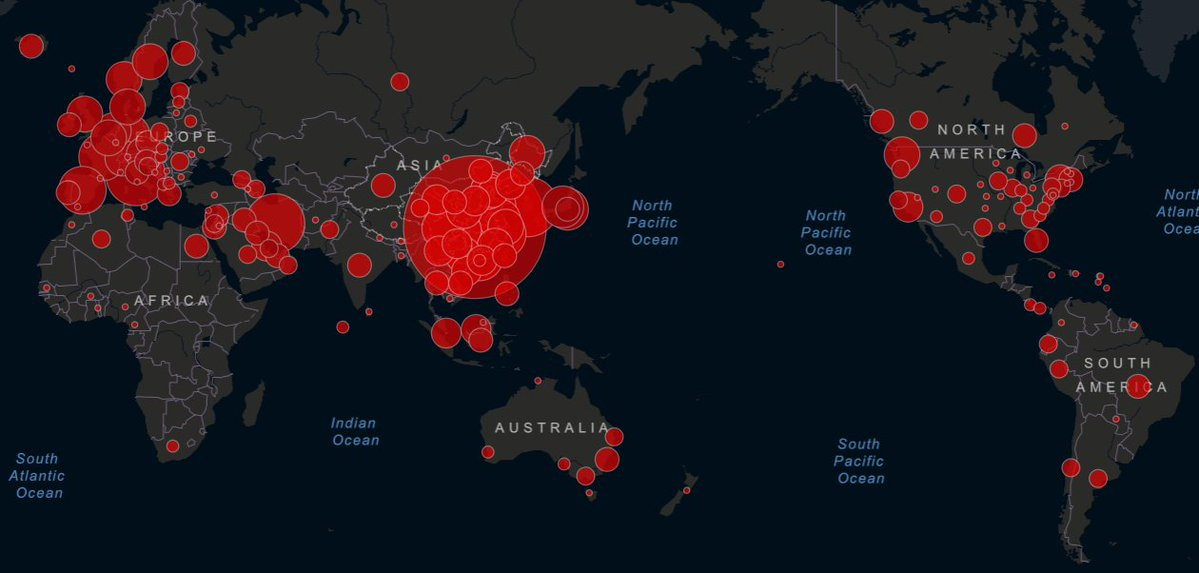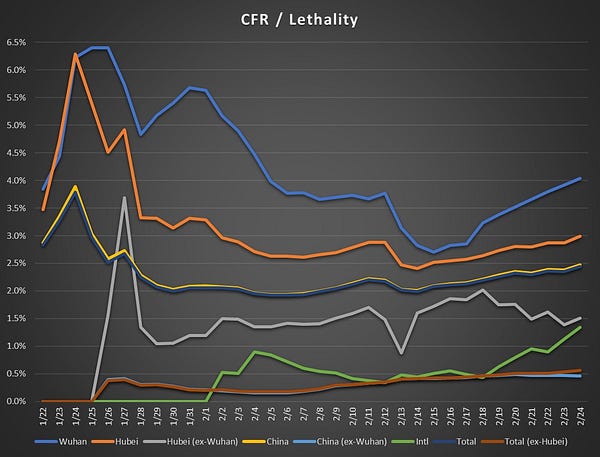
OSINT HK organically transformed into a COVID19 monitoring group in late January, as soon as the number of infected shot up in Wuhan. It had been on Hong Konger’s radars since January 1st. As someone selling subscriptions to what I half-jokingly call ‘a Bloomberg Terminal for Plague Updates’ and running a group asked to verify a lot of multimedia and data, I’ve had a front-row seat to nearly every twist in this outbreak story. And writing from Hong Kong, where it seems we truly dodged an outbreak bullet, I think I have some perspectives on what’s coming to the rest of the world.
It’s surreal watching the rest of the world going through the same thing we just went through. It’s terrifying seeing many places repeating the same mistakes.
How Hong Kong Dodged the COVID19 Bullet… for now.
A General Model of COVID19
What’s Next
How Hong Kong Dodged the COVID19 Bullet… for now.
One thing China, Hong Kong, Taiwan, Vietnam, and Singapore share is a collective experience of being hit with an outbreak from China in the recent past (SARS). In 2020 they all shared the experience of containing COVID19 early enough to prevent most community infections. I can’t speak for the other locales, but nearly everyone in Hong Kong thought the disease was already here and spreading by the time Wuhan went on lockdown (January 23th).
A ‘leader’ whose approval rating was already in the single digits, Carrie Lam refused to return early from hosting dim sum summits in Davos in these critical days. While bullet trains from Wuhan were still coming in from all over China, our Acting Chief Executive told the media the government wasn’t even keeping track of Wuhan arrivals. Demands to close the border with China were endorsed by our newly unionized Hospital Authority doctors and nurses, who went on strike on February 1st demanding as much (and more resources).
All of this is just a setup for what happened: convinced our government was failing at a time of crisis, as it had since June 2019, most Hong Kongers acted as if the virus was already here and raging undetected. Nearly everyone wore masks when they went outside, even though they were sold out. Everyone washed their hands frequently. Without being asked or ordered to, most businesses told workers to work remotely when that was an option. Everyone tried to stay inside. Malls, buses, trains, and restaurants were nearly empty for two months.
With Hong Kong now ranked below 50 on the outbreak dashboards, there’s a prevailing sense in Hong Kong that we saved ourselves. Because we didn’t trust our government, we followed the situation closely and took every precaution. The result was something like herd immunity. We were so good at this that we ground a bad flu season to a halt too. Every infectious disease has nearly flat-lined too, in fact.

The complete story would add two more variables. First, the public health system in Hong Kong did hold up more than Hong Kongers give it credit for. We’ve been quarantining suspected cases since December, we don’t have the problems with testing plaguing other locales, and they’ve done a phenomenal job at tracking case histories.
Second, the situation was more contained in Guangdong than we thought at the time. This to say the wealthiest province in China, with one of the most substantial number of migrant laborers, had the means and motivation to ensure they were tracking, testing, monitoring, and quarantining anyone they needed to. Despite Hong Kong’s lax cross-border restrictions, I think it’s the case that Guangdong officials ensured no one infected on their side boarded a train or coach to Hong Kong - or anywhere, for that matter. The flip side of this is that I think the situation here would be much more dire had there been an undetected outbreak in Shenzhen or Guangzhou. There wasn’t.
A General Model of COVID19
It was difficult to grasp the general statistical characteristics of COVID19 from January through February. The first-order problem is that the Chinese data varied in credibility chronologically and geographically. Chronologically, we still don’t have a full picture of who knew what and when and where the initial cover-up order came from. What we can say for sure right now is that Wuhan doctors knew COVID19 was person-to-person by December 30th, they were silenced, and the CCP didn’t admit this reality for another 21 days (January 20th).
I don’t trust any stat before January 20th, but I do for roughly the next two or three weeks following Wuhan going on lockdown on January 23rd. There were several weeks where I think the CCP was providing the world with roughly the same information they had, but they were severely hampered by a lack of testing and false negatives. I’m generally confident that the numbers that came out of Wuhan are more-or-less accurate, but I think it’s likely that COVID19 deaths were covered-up or intentionally untested to keep the numbers down in other provinces. For instance, last time I did the math, this disease was more lethal in Australia than Hebei.
The most important thing we learned from Wuhan is playing out right now in Lombardy, Italy. It’s easier to understand what epidemiologists mean by ‘flattening the epidemic curve’ when we looked at the opposite: hospitals essentially getting DDOS’d by patients with upper respiratory infections seeking tests and care. You can see it clearly here in this video that we were asked to confirm. About a day later, we were asked to verify a video showing bodies piling up on hospital floors next to patients inside hospitals.
There are different estimates about what the baseline CFR of COVID19 is. About an hour ago, I heard Dr. Fauci tell a Congressional hearing that he believes it’s about 1% if you account for all the asymptomatic cases that likely aren’t being tested. A recent age and time adjusted case study of the Diamond Princess put it above 2.5%. I want to suggest that this baseline number doesn’t matter. It was nearly 7% in Wuhan according to official stats when those videos were shot. It’s now 8.6% in Lombardy. For those most worried about fatality, overwhelmed healthcare systems is the primary threat vector.



What’s Next
Neither Europeans or Americans have the collective memory of SARS to work from. What I see in social media and news reports are populations completely unprepared to do what most of Asia just went through to get this thing contained. And it is contained in Hong Kong, Macau, China, Taiwan, Vietnam, and South Korea. There are concerns that the Japanese are bungling their response, if not doing a soft cover-up by not testing enough because they don’t want the Tokyo Summer Olympics canceled. There are serious concerns about Indonesia and the Philippines right now looks like a smaller-scale version of what’s playing out in the United States.
Beijing authorities announced today that all international travelers flying into the city must go into 14-day quarantine. As ‘ironic’ as that is given their own history with travel restrictions, I think we should assume this will be the norm across Asia very soon. We just got this thing under control and our primary threat vector for a second wave arriving from Europe and the United States. To wit: anticipate that the same travel restrictions and quarantines placed on us are about to be reversed.
Depending on how bad it is in the US and Europe (and for how long), this may or may not work. There might well be community infections across Asia in places that think they have this under control because they never thought to screen German or British travelers. It’s still very uncertain whether, or if, asymptomatic people are infectious. Assume the worse if they are. It’s well beyond my expertise or knowledge to know how that’s going to affect the markets and economy writ large.
Finally, I would take very seriously Merkel’s recent statement that German epidemiologists think this will infect up to 70% of the global population. With WHO having lost all credibility, we’re going to be getting important updates like this from reputable governments.

That’s all for now. I’ll try to send a less ‘big picture’ COVID19 update soon.





We can also be retrospectively grateful that, unlike Singapore, visitors/WuFlu carriers from the Mainland stayed away because of the HK protests.
Thank you. I’m so worried for those that will becoming into contact with the unscreened carriers coming back from overseas. We are about to tip the scales tragically.